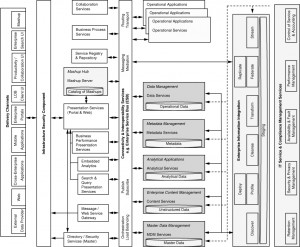If an executive walks into the room and asks us what we are talking about then evasive maneuvers are in order. Let’s say: “Oh, we are covering a number of topics.” Or, if that doesn’t work then we’ll lie: “We are brainstorming ways to do more with less.”
But please let’s agree here and now that we do not admit that we are arguing about the difference between a “lead” and a “sales opportunity”. See, there is no time for “defining words” in the project plan.
And this is essentially why Information Architecture is most likely not the shortest path to the corner office.
My recommendation is to build Information Architecture to-do’s into other tasks. If you have a WBS code (or even a task) for Information Architecture then that will raise an issue: Sponsors don’t want to pay for that. But don’t build it into “IT Strategy”. They won’t want to pay for that either (until they are asked if they have one in a board meeting).
I recommend that you build Information Architecture into something named like “Integration”. Sponsors are willing to pay for integration. And what complicates integrating different systems (“makes it more expensive and take more months” in executive speak) is that those systems were built by different people–different people with different definitions for words. But even sponsors and executives get hopping angry if it takes an inordinate amount of time to integrate parts of the same system because “no one was talking to each other”.
Similar issues arise when integrating people. A discussion between people, I mean. If they are speaking the same words, but with different definitions in mind, then a lot of time and emotion gets wasted.
That is why, before we talk about anything else, I want to talk about defining words. That is the purpose of this series.



